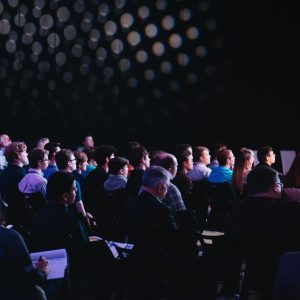While 2020 may have been a difficult year for many, there remains cause for celebration. In the ongoing struggle against the pervasive threat of EMF, have reached a turning point in the narrative – both within the social sphere, and in the global medical and scientific communities, where research into the impact EMF is having on our bodies has, until now, been largely stifled by those who hold more sway.
In January 2021, the EMF Conference – the first of its kind – will take place online over the course of four days. Organised by the Electromagnetic Safety Alliance, it will bring together academic minds from across the world for a series of unparalleled discussions over the threat posed to human life as a result of the growing proliferation of electromagnetic radiation.
For those who have been concerned about the risks of EMF radiation for many years, and have borne witness the immense struggle faced by anyone seeking to spread awareness against the tide of largescale corporations’ ulterior motives, this news is incredibly encouraging. With the scientific community growing stronger and joining together in the fight for the health and wellbeing of billions across the globe, it is growing easier to envisage a world marked by significant change, growing awareness, and a greater concern for our shared future.
What Can We Expect?
For starters, we can anticipate a wealth of advanced, peer-reviewed information gathered from some of the most respected research facilities the world has to offer. In the struggle against EMF, our greatest strength is our ability to push forward with research. As those who deny the risks are forced to turn to outdated statistics not relevant to our modern way of life, the differences between ‘us’ and ‘them’ will continue to grow starker, and more compelling for those who remain on the fence over the danger to which they are exposed.
As such, we can look forward to standing at the very pinnacle of EMF research, alongside those whose concern lies with humanity, rather than corporate profit and grievous progress.
We can anticipate a critique of some of the most pressing topics of the 2020s. For instance, research into the health and safety issues surrounding 5G can be presented, alongside some of the most contemporary insights into cell phones, wearable tech, and the health ramifications of our increasing reliance on the Internet of Things.
Similarly, from a medical standpoint, we will be able to learn more about the true impact medical professionals have witnessed within their own practices. The symptoms, treatments, and clinical diagnoses, and their correlation with our current levels of exposure.
The findings will, no doubt, prove to be shocking. The nature of EMF exposure ensures that, for those who tune into the conference, it will prove to be a difficult and harrowing experience. Unfortunately, this is an unavoidable step in the road toward lasting change, but the impact this conference – and others that follow – will have on the medical, scientific, and public spheres will certainly prove to be invaluable.
Cutting Through the Controversy
At least thirty voices from the fields of medicine and physics are billed to speak between January 28th-31st, and to give weight to the narrative that stands in direct opposition to the stubborn espousal of corporate giants with skin in the game.
As mentioned, the greatest pressure extends from those industries and corporations for which downplaying fears over EMF remains integral to their continued growth. Put simply, if their extensive userbase begin to recognise the risk inherent to centring all aspects of life around these devices,
It is for this reason that we can also anticipate further insight into the technology behind EMF protection, and the ways in which it can be utilised to counteract the terrifying progress of new radiation-emitting devices. The notion that humanity must rely on EMF blocker technology in order to continue to live and work with the same efficiency we have enjoyed for the past few decades.
For, while the necessity to change the ways in which we view and use EMF-emitting devices remains indispensable, EMF protection offers the most sustainable route forward. The outcome of this seminal conference will ideally prompt many to grow more suspicious of modern technology, but this will prove hollow if we do not have a reliable alternative to offer.
We cannot hope to reverse the abundance of EMF-emitting devices that the vast majority now use on a daily – if not hourly – basis, which means that EMF protection must comprise the main focal point of any discussion over the growing list of medical and scientific concerns toward modern levels of electromagnetic radiation.
The conference will also be open to those who do not work in professional medical and scientific fields, which makes it an excellent opportunity for you to grow your understanding of the risks that surround us.
Margie

